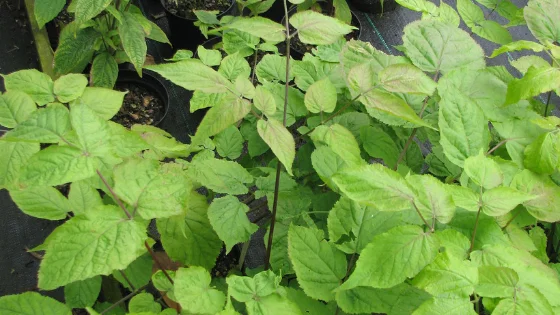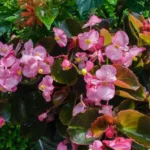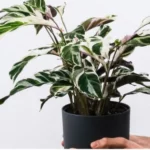Table of Contents
Aralia Plant Care
Aralia is part of the Araliaceae family, which is home to seventy different species of plant. The scientific name for this plant is Polyscias sp. Aralia are a tropical plant and they thrive in warm humid environments.
This plant is multi-stemmed and striking, which makes it a favourite with plant enthusiasts. This plant comes in many forms including evergreen and deciduous trees and shrubs.
Profile
Aralia plants tend to prefer areas that have full access to the sun or areas that are partially shaded. These plants require soil that is well drained, and they prefer areas that are sheltered, as harsh winds can burn the leaves.
The foliage of these plants is a bit unusual as the leaves tend to be round in shape and the undersides of the leaves are purple in colour.
This plant is native to islands of the Pacific Ocean, India, Central America, and parts of Africa. In the wild the Aralia lives in the mountain woodland areas.
These are herbivorous plants that only reach about fifty centimetres in height. The thin stems of this plant are very fragile, so care needs to be taken to prevent rot.
Character
The Aralia has a striking multi-stemmed appearance and it will do well, as long as its in the correct area and not overwatered.
The leaves of this plant are covered in bristle and they form as a cluster at the end of the prickly stems.
These plants produce white or greenish flowers and berry like fruits that are purple in colour, these berries are popular with birds. This plant tends to bloom during the autumn and winter months.
Helping Aralia Thrive
Light
These plants will thrive in bright light or areas with filtered light. When Aralia are kept as houseplants you will need to ensure that they are able to get plenty of natural light, therefore it is best to put them on windowsills or in a porch where it will get minimal shade.
Sitting the plant in the correct location will mean that there is no need to move it to fit with the natural light. A good location for an indoor plant would be in a location that is west or south facing.
Temperature
These plants are best kept in doors and will thrive in house temperatures. The ideal temperature for this plant when kept indoors is between eighteen degrees centigrade and twenty-nine degrees centigrade.
Soil
Aralia plants will benefit from slow releasing fertilisers that are specifically designed for shrubs and trees. A recommendation would be to add fertiliser every couple of months and especially during the summer and spring months. These plants grow best in neutral to acidic soils.
During the autumn and winter months fertilising could be reduced to every three months. If you notice that the leaves are starting to drop then add more fertiliser.
Twice a year the soil should be aerated, and a peat-based soil added to the plant.
Humidity
Aralia plants tend to thrive in a moderate to high level of humidity. One good way to get a good level of humidity is to place the plant on a tray filled with pebbles and covered with water. Plants that are kept on a tray like this will require less watering as they will absorb water from the tray.
Once a plant is mature it is possible for the plant to survive at a normal level of household humidity, but it is important to keep the plant away from draughts and open doors.
If you are concerned that the level of humidity being too low, then it can help to use a humidifier to increase the level of humidity.
How to Water
These are plants that require regular watering and especially during dry and hot weather.
The soil should dry out between the watering as these plants will not do well in soggy soils. When these plants are kept indoors during the winter months they will not need to be watered as often, only a couple of times per month.
The best way to water Aralia plants is to drench and then let the soil dry before watering again. Avoid over watering as this will cause the roots to rot and the plant will struggle to survive.
How to Fertilise
Aralia plants tend to do better in balanced soils. A fertiliser that is high in nitrogen is perfect for these plants and will help them to thrive.
Pruning
Aralia is a plant that will require very little pruning.
Aralia plants only require a minimal amount of pruning when they are new plants. For the first few years this plant will only require a renewal prune to keep it healthy and this will promote a bushy growth.
Aralia plants that are kept outdoors may need suckers to be removed on a regular basis to prevent the plant from spreading. These plants can take over the garden if it is not kept pruned.
Propagation
When potting these plants, it is best to use an all-purpose potting mix. The easiest way to propagate are through stem cuttings. It is best to propagate from stem cutting during the spring months.
When you plant the cutting use a rooting hormone to encourage growth and keep them in a warm and humid place for a couple of weeks until growth is happening. It is best to put several stem cuttings into one pot as this will assist with plant growth.
These plants are very easy to look after, therefore they are the perfect plant for someone who wants to keep their first real plant.
Planting the Aralia correctly is important to get plants that will thrive and survive for many years. When you first pot these plants, you will want a very shallow pot and opt for a planter that allows for a good level of drainage to prevent the problem of pot rot.
Planting
When it comes to planting these bulbs ensure that you have all the tools that you require and then place the bulb in the desired area.
Once you have the seed in the desired area surround it with loose grain soil or peat-based soil, leave about half at the top. Use fertiliser to cover the remaining half an inch. Give the new plant a good soaking with water and then let it settle.
If you have the potted plant sitting on a saucer drain it on a regular basis to prevent the plant roots from becoming rotten.
If you are keeping your plant in a dry environment, then it may be a good idea to often spray it with mist initially. Check the dampness of the plants about every ten days.
Extra Tips For Aralia Care
Pests and Disease
Aralia plants have several pests, and these are the ones that tend to affect most indoor plants including aphids, spider mites and mealybugs. An infestation of any of the pests can be enough to kill an Aralia.
The tops and undersides of the leaves should be checked on a regular basis for any signs of pests or disease. Small brown or yellow dots will be a sign of spider mites and it may even be possible to see a web like residue which is left behind by the mites.
Mealybugs also leave signs that they are there in the form of puffs that are cotton-like and often seen on the leaves and stems.
If you get an infestation of any of these pests the plant can be treated if caught early using an insecticidal soap or a neem oil. After a week of treatment if the plant does not show any signs of improvement or if the infestation becomes worse it is best to get rid of the infected plant.
FAQ
Is Aralia an indoor plant?
These plants are versatile and can be kept either indoors or outdoors. They are a great way to add some easy to care for green to your indoor space or landscape your outdoor garden space.
The Aralia is an indoor plant as they thrive at room temperature. These plants make good decoration either sitting on the floor or on a table top.
Taking care of the plant?
Aralia plants are very easy to care for and do not require much attention. Ensure that you are not over watering the plant, as they are a very basic plant species to look after and do not need much care.
Why is my plant dying?
Aralia will struggle indoors if you do not provide them with enough space to grow. Another problem that could arise is overwatering, therefore it is important to allow the soil to dry out between watering.
If your indoor Aralia is struggling, try loosening the soil surrounding the bulb.
If your Aralia plant is struggling, then check the conditions that you are keeping the plant in. When these plants are kept in a temperature that is too cold then the leaves will wilt and fall off the stems.
How often do you water Aralia?
One tip that is very useful is to keep a spray bottle nearby so that you can often give the plant a mist spray.
peganum from Henfield, England, CC BY-SA 2.0 https://creativecommons.org/licenses/by-sa/2.0, via Wikimedia Commons



